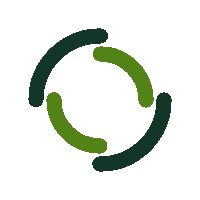We can turn your existing content into web pages that rank by updating formatting, changing page titles, adding title tags, and ensuring all photos have image alt text. You can use our tool to instantly check for keyword consistency, title tags, image alt tags and all the other on-page SEO factors mentioned in this article. According to the Moz search ranking factors survey, title tags, also known as heading tags, are listed as the second most important ranking factor. You can get readers to click on your results by creating meta descriptions that are descriptive and that contain your target keywords and/or variations thereof.
They’re constantly tweaking their rubrics for assessing content—not to mention the many outside influences. From semantic search to featured snippets to AI results, the space keeps evolving. The ideal On Page SEO score varies, but it generally means your page is well-optimized according to SEO best practices. While Off Page SEO might seem less controllable compared to On Page SEO, it’s equally important. A well-rounded SEO strategy requires a balance of both On Page and Off Page efforts. To better cater to customer needs and encourage repeat purchases, I recommend adding personalised product recommendations to your product pages.
Our on-page SEO checklist and tracker helps you keep track of all the little things that you need to do to optimize your content. So if you’re looking for the key to enhancing visibility and user experience, this chapter will answer all of your burning questions. It will show you whether your target keywords appear in important areas.
Build links from relevant websites
A clear call-to-action button, such as “add to cart” or “proceed to checkout” will ensure that they follow through with a purchase. In August 2022, Google rolled out its first “helpful content update” to reward websites producing original, people-first content. Rather than creating content just to please Google’s algorithm, your content should fulfill key user needs first.
With mobile-first indexing, Google predominantly uses the mobile version of the content for indexing and ranking, making mobile responsiveness critical for SEO. That means consumers may be discovering your site through your images. In order for them to do this, though, you have to add alt-text to your images. Featured snippets are excerpts from web pages that Google displays at the top of its search results, often called ‘position zero,’ to answer user queries directly. These snippets can be directly clickable to the relevant section on the source page and are instrumental in increasing click-through rates and enhancing brand authority.
Update URLs, page titles, and meta descriptions.
Think of your meta description like your Facebook ad copy, it’s role is to entice readers to click on your result. The H1 tag is usually the most visible content on a page and should not be used more than once per page or blog content. Most modern Content Management Systems such as WordPress and Wix, create the blog article title using the H1 tag. Some SEO professionals agree that the target keyword (and variations thereof) should be used no more than once per 200 words of blog copy.
- Common on-page SEO optimization examples include producing content, writing title tags, and creating internal links.
- Use tools like Surfer SEO or Frase to help you identify important NLP phrases and topics based on what’s already ranking in the SERPs.
- If you search for “strong brewed coffee”, none of the results includes the exact phrasing, yet the content satisfies the search intent.
- Text readability is one of the most important factors that influence the overall UX of your site.
Five of them linked to other authoritative websites while the other 5 had no outbound links. Multiple internal links on the same page are totally fine for SEO, just make it look natural and don’t go into extremes. Internal links are a great way to keep the reader on your site. They increase user interaction and bring added value by offering relevant resources SEO Anomaly or pages. The structure depth is closely connected to the internal links. In conclusion, the key to success online is learning all aspects of On Page SEO.
They also monitor performance and rankings over time, making suggestions as ranking factors change. This not only improves your user experience but also gives you valuable data on what people are searching for. They can rank on search engine visual searches and can be discovered more readily than the articles themselves.
For HubSpot customers, our Page Performance tool (under Reports) will allow you to do this. If you’re not using HubSpot, you can try using a free tool like Xenu’s link crawler. It may seem counterintuitive to include external links throughout your page considering we just covered multiple reasons why internal linking is so important for on-page SEO. Write a compelling meta description that summarizes the page’s content and encourages users to click through from search results. Also, the longer visitors are on your website, the more time Google has to crawl and index your site pages. This ultimately helps Google absorb more information about your website and potentially rank it higher on the search engine results pages.



Leave a reply